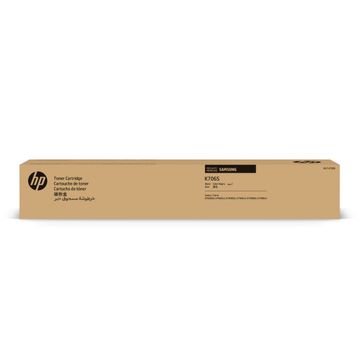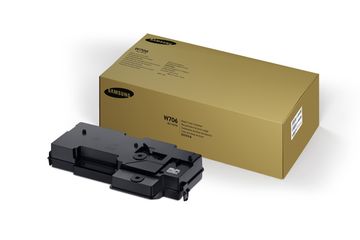Samsung MultiXpress SL-K7400GX Toner Cartridges
The following 2 products are guaranteed to work in your Samsung MultiXpress SL-K7400GX printer:
2 products are guaranteed to work in your printer:
Black toner cartridges for Samsung MultiXpress SL-K7400GX printer:

Pack of 1 cartridges 1 pack |
0.2p per page
(1 pack)
- 45,000
- Lowest online price guarantee
- Lowest online price guarantee
FREE next-day delivery
- Buy more, save money
- 2 £91.08 inc VAT
- 3+ £90.07 inc VAT
Maintenance items for Samsung MultiXpress SL-K7400GX printer:

Pack of 1 cartridges 1 pack |
0.0p per page
(1 pack)
- 300,000
- Lowest online price guarantee
- Lowest online price guarantee
Out of stock
- Buy more, save money
- 2 £65.96 inc VAT
- 3+ £64.99 inc VAT
What toner does the Samsung MultiXpress SL-K7400GX use?
The Samsung MultiXpress SL-K7400GX uses Samsung MLT-K706S toner cartridges. Samsung MLT-K706S toner comes in black; the black cartridge prints 45,000 pages.
Samsung MultiXpress SL-K7400GX Printer Review
Expert review of the Samsung MultiXpress SL-K7400GX printer
The Samsung SL-K7400GX 440ppm mono multifunction printer is an MFP with a quad-core central processing unit. The user becomes one of the lucky people to enjoy the first quad-core 1.5 GHz CPU from the industry across the globe.
Using first-of-their kind products from the industry comes with quality before other players in the industry develop counterfeits. High-performance interpretation as well as rendering of emulation is a result of the powerful system-on-chip technological advancement built into the printer.
Design
With a large touch-screen interfaces on the front of the machine, the Samsung SL-X7500GX looks modern and eye-catching in the office.
Advantages
Comparatively, the Samsung SL-K7400GX has a speed twice as fast as MFPs that are dual-core-based. The rate of scanning is also two-times faster compared to the dual-core-based MFPs. The dual scanner is recommended because its document feeder simultaneously scans the two sides of a document. Similarly, its capacity allows it to scan 240ipm. In relation to other printers, the rate is six times faster whereas, the same is double the speed that the X430 series churns out documents.
The intuitive touch enables the user to print 960 x 600 dpi whose resolution goes through the 90-degree rotation. This way, the scanner works just like a tablet. The user finds little difference with using a tablet. By adding 2.0 functionality, Samsung became the first company to develop an Android-based printing UX, the SMART UX Centre. You are guaranteed to enjoy all these privileges.
Yes, people use products that result from advances in technology but the Samsung SL-K7400GX goes further to ensure the technology gives you crisper and clearer results. The next-generation polymerised toner is responsible for outstanding finishes that make the results clearer supported by the in-built Laser Beam Scanning Unit (LSU). It gives a 1200 x 1200 dpi resolution.
Texts and graphics are sharpened by Rendering Engine for Clean Pages (ReCP). If it is getting a printer then, the Samsung SL-K7400GX is the most recommended. What the user enjoys is beyond value addition by the manufacturer. The printer lives to its office transformation slogan, innovated for the user.
Disadvantages
Just like most other multifunction printers, a failure in one functional system of the Samsung SL-K7400GX, say the scanner, affects the other functional components. This means they cannot be used for the period that the failure persists. This may lead to outsourcing of the affected services, incurring extra operational costs.